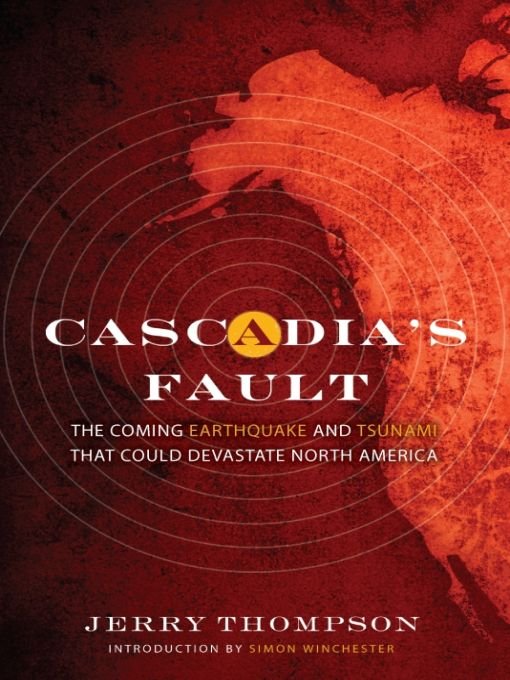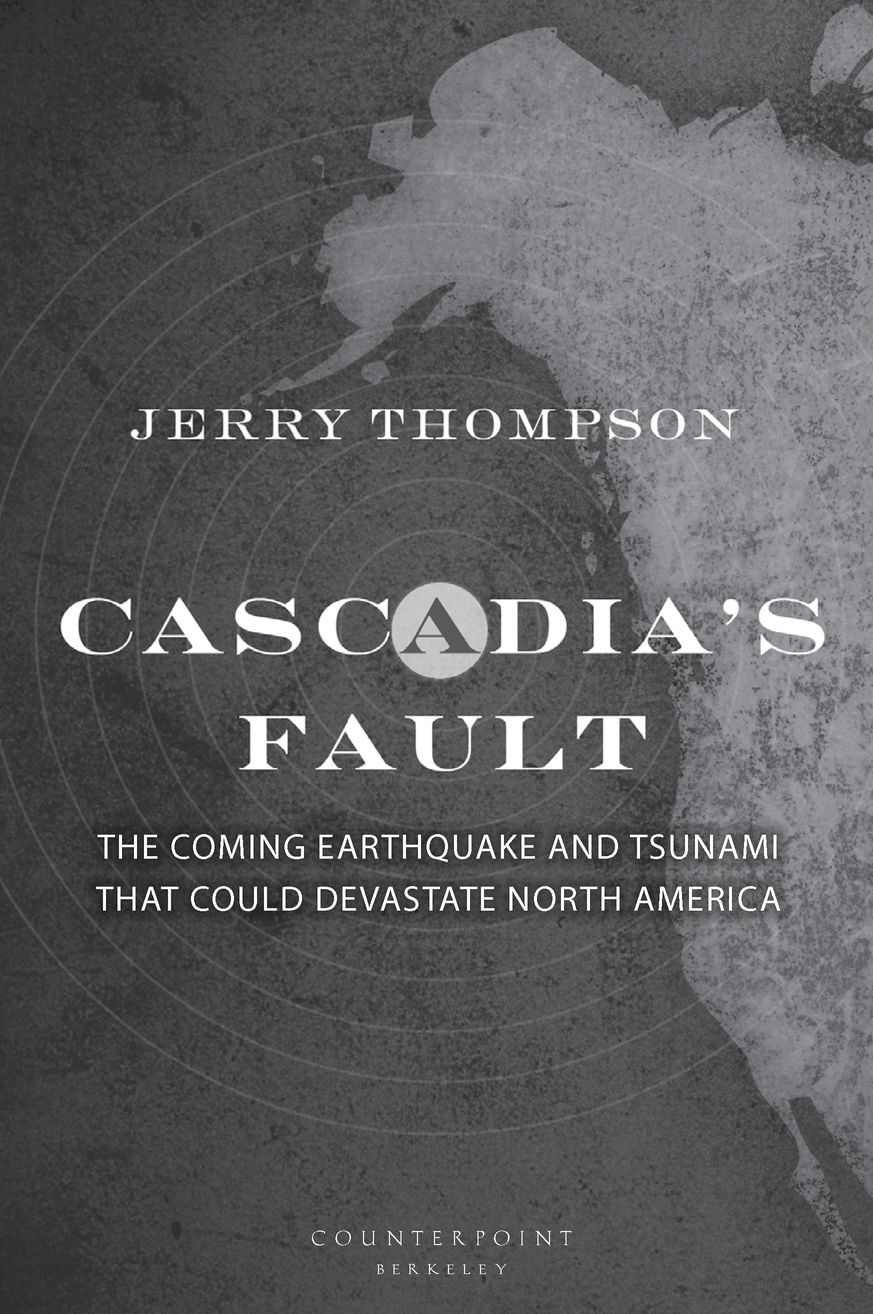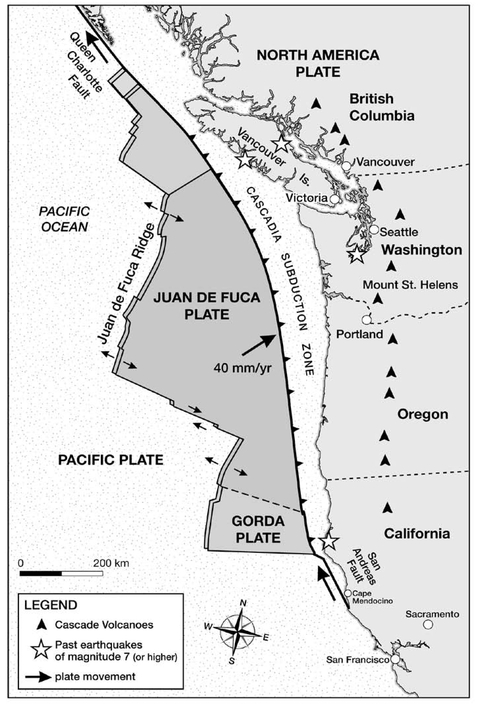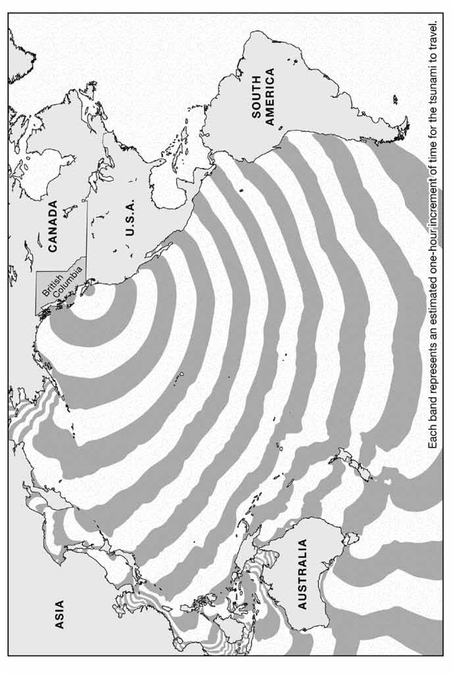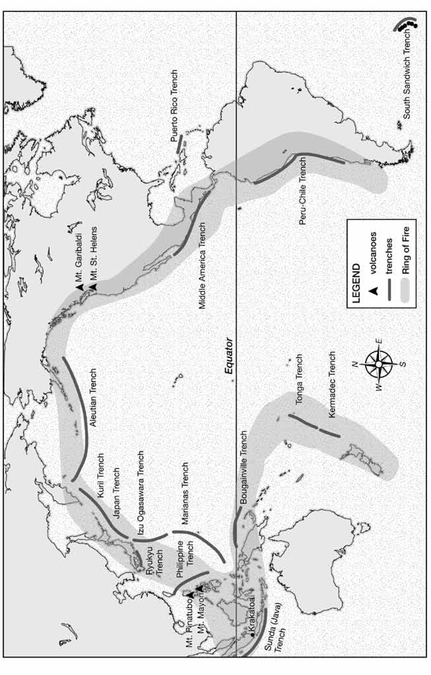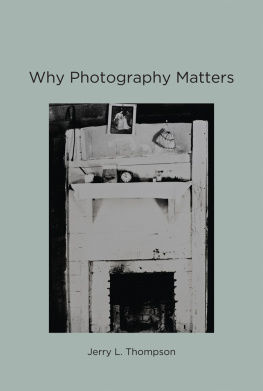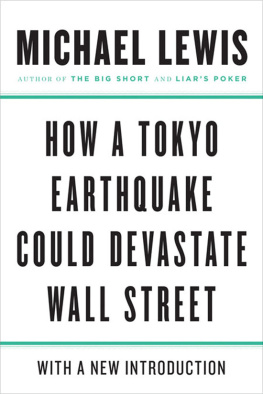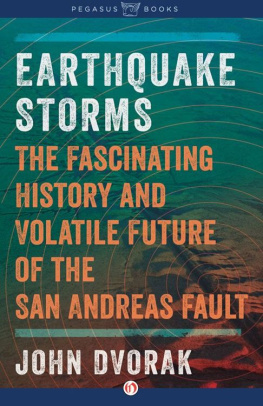Table of Contents
To Bette and Ali, the people at the heart of my universe
CASCADIA SUBDUCTION ZONE
TSUNAMI TRAVEL TIME
RING OF FIRE
FOREWORD
by Simon Winchester
Of the sixteen most disastrous earthquakes to have shocked this planet since 1900, no fewer than fifteen have occurred along the shores of the Pacific Ocean, around the notorious Ring of Firea crucial but generally unfamiliar component of which is the subject of this book, the Cascadia Subduction Zone.
All of the earthquakes, and all of the tsunamis that some of these quakes have spawned, have been ferociously destructive. In drawing up a league table one might reasonably have supposed the Sumatran tsunami of December 2004caused, of course, by a huge submarine earthquake after the fracture of an offshore subduction fault systemto be historys absolute worst; and insofar as it killed a quarter of a million people, then maybe in terms of statistical lethality it is. But what is now officially called the great Tohoku earthquake of 2011and what spawned the grim tsunami that hit the northeastern Japanese coast on the afternoon of Friday, March 11has implications that linger still, and that may well make this event even more deadly, in the long term.
The Japanese quake, originating as it did on the western edge of the Pacific tectonic plate, has revived interesturgent and alarmed interest, evenin what might happen if the Cascadia fault system, which lies with ominous congruency on the plates eastern side, were to rupture too. Most imagine the direst of consequencesconsequences that are likely to parallel with some precision just what happened in Japan. The two fault systems are very similar and are tectonically connected to each other. Both lie roughly fifty miles (80 km) offshore from their respective continents; both are subject to vast internal stresses; both, if they fracture, can cause terrible ground-shaking onshore; and both can generate immense tsunamis at sea.
All of the broken bones that resulted in northern Japan, all of those broken lives and those broken homes and broken cities and, most sinister of all, those broken atomic reactors, swiftly prompted much of humankind to remember what in calmer times we prefer to forget: that most stern and chilling of mantras which holds, quite simply, that mankind inhabits this earth subject to geological consentwhich can be withdrawn at any time.
For thousands of people, maybe tens or even hundreds of thousands, this consent was withdrawn with shocking suddenness (all geological events are sudden, and all are unexpected, if not necessarily entirely unanticipated) at 2:46 p.m. on what was a clear, cool spring afternoon. One moment all were going about their quotidian businessin offices, on trains, in rice fields, in stores, in schools, in jails, in warehouses, in shrinesand then the ground began to shake.
At first, the shock was merely a much stronger and rather longer version of the temblors to which most Japanese are well accustomed. There came a stunned silence, as there always does. But then, the difference: some few minutes later, a low rumble from the east, and in a horrifying replay of the Indian Ocean tragedy of just six years before, the imagery of which is still hauntingly replayed in all the worlds minds, so the coastal waters off northern Honshu vanished, sucked mysteriously out to sea.
The rumbling continued as people began to spy a ragged white line on the horizon, and then, with unimaginable ferocity, the line became visible as a wall of waves sweeping back inshore at immense speed and at great height. Just seconds later, these Pacific Ocean waters hit the Japanese seawalls, surmounted them with careless ease, and began to claw across the land beyond in what would become a dispassionate and detached orgy of utter destruction.
We all now know, and have for fifty years, that geography is the ultimate reason behind these disasters. Japan is at the junction of a web of tectonic plate boundaries that makes it more peculiarly vulnerable to ground-shaking episodes than almost anywhere elseand it is a measure of Japanese engineering ingenuity, social cohesion, the ready acceptance of authority, and the imposition of necessary discipline that allows so many to survive these all-too-frequent displays of tectonic power.
But geography is not the only factor in this particular and acutely dreadful event. Topography played an especially tragic role in the story toofor it is an axiom known to all those who dwell by high-tsunamirisk coastlines that when the sea sucks back, you runyou run inland and, if at all possible, you run uphill. But in this corner of northeast Japan, with its wide plains of rice meadows and ideal factory sites and conveniently flat airport locations, there may well be a great deal of inlandbut there is almost no uphill.
Such mountains as there are sit far away, blue and distant in the west. All here is coastal plain. And so the reality is this: if a monstrous wave is chasing you inland at the speed of a jetliner, and if the flat topography all around denies you any chance of sprinting to a hilltop to escape its wrath, then you can make no mistake: the wave will catch you, it will drown you, and its forces will pulverize you out of all recognition as a thing of utter insignificancewhich of course, to a tsunami, all men and women and their creations necessarily must be.
Even more worrisome than geography and topography, though, is geological history. For this event cannot be viewed in isolation. There was a horrifically destructive Pacific earthquake in New Zealand on February 22, 2011, and an even more violent magnitude 8.8 event in Chile almost exactly a year before. All three phenomena involved more or less the same family of circum-Pacific fault lines and plate boundariesand though there is still no hard scientific evidence to explain why, there is little doubt now that earthquakes do tend to occur in clusters: a major event on one side of a major tectonic plate is often (not invariably, but often enough to be noticeable) followed some weeks or months later by another on the plates far side. It is as though the earth becomes like a great brass bell, which when struck by an enormous hammer-blow on one side, sets to vibrating and ringing all over.
And now there have been three catastrophic events at three corners of the Pacific plateone in the southeast, on February 27, 2010; one in the southwest, on February 22, 2011; one in the northwest, on March 11, 2011.
That leaves just one corner unaffectedthe northeast. And the fault lines in the northeast of the Pacific plate are most notoriously the San Andreas fault, underpinning the city of San Francisco; the Hayward fault, underlying the teeming and less well engineered cities of Oakland and Berkeley; and then offshore, the 800-mile-long Cascadia Subduction Zone fault. If the San Andreas or the Hayward fault were to rupture, the devastation on land could be immense; but if the Cascadia were to do likewise, the event would be global in scale, regional in destructiveness, lethal in a vast swath of countryside from Vancouver Island to the border of California. It would be a disaster of titanic proportions. It would, in a word, be epic.

